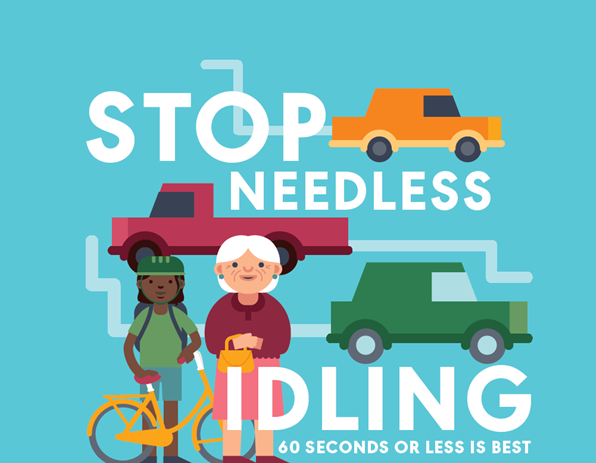Fort Air Partnership has partnered with other Airsheds in Alberta to discourage needless idling of vehicles. Research shows that reducing the idling time of a vehicle to 60 seconds or less reduces negative impacts on air quality and the environment, and saves fuel and money.

For example, excessive idling increases the emission of pollutants such as particulate matter, which can aggravate health problems among people with heart and lung conditions, older adults and children. In the U.S., Environmental Protection Agency air monitoring at schools has shown elevated levels of toxins during pickup times as parents sit in idling vehicles waiting for their children.
Interestingly, idling for 10 seconds wastes more fuel than restarting a vehicle. Excessive idling can also strip oil from critical engine components. Even for diesel engines, idling for longer than seven minutes is typically not advised and provides no benefit regardless of weather conditions.
It is estimated that if all drivers in Canada reduced needless idling by three minutes per vehicle per day, collectively it would annually save 1.73 million litres of fuel, $630M in expenses and take the equivalent of 320,000 vehicles off the road. Block heaters are a good alternative to warming the engine before starting on very cold days. At -20°C, block heaters can improve overall fuel economy by as much as 10 percent.
Fort Air Partnership is encouraging local drivers to not idle their vehicle if parked for more than 60 seconds once the vehicle is warm. People are asked to show their commitment to vehicle idling reduction by taking a pledge. You can learn more about vehicle idling reduction by visiting the Alberta Airsheds Council’s website.


